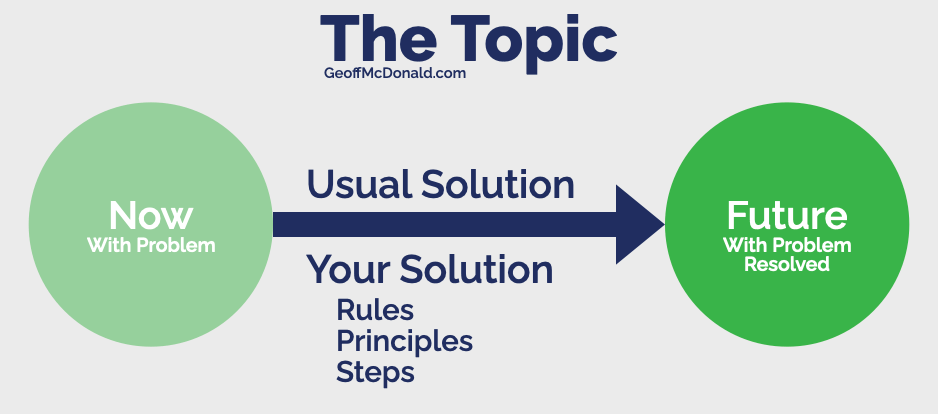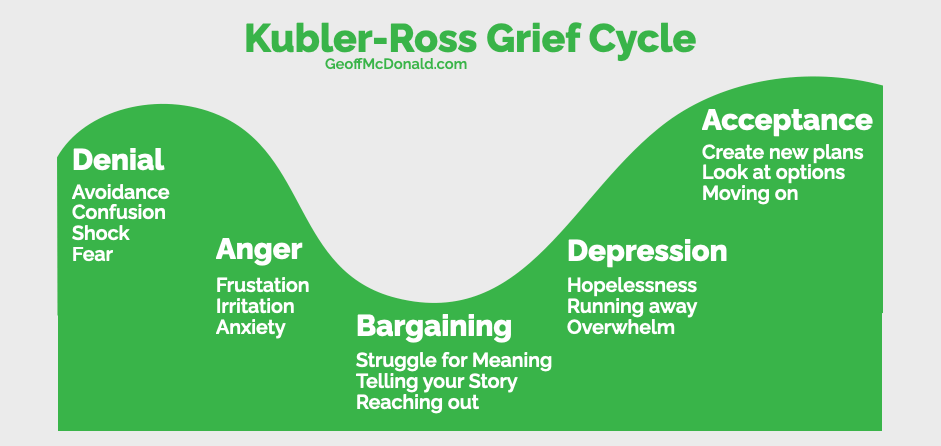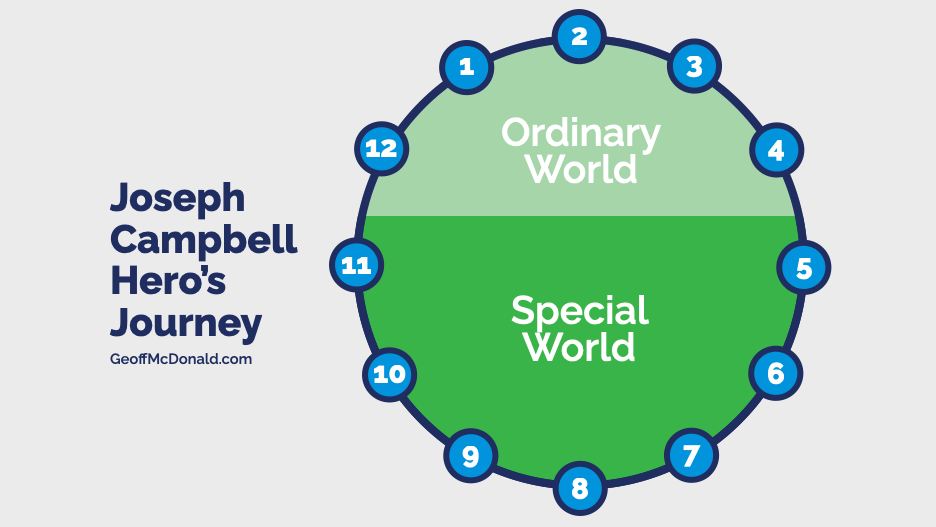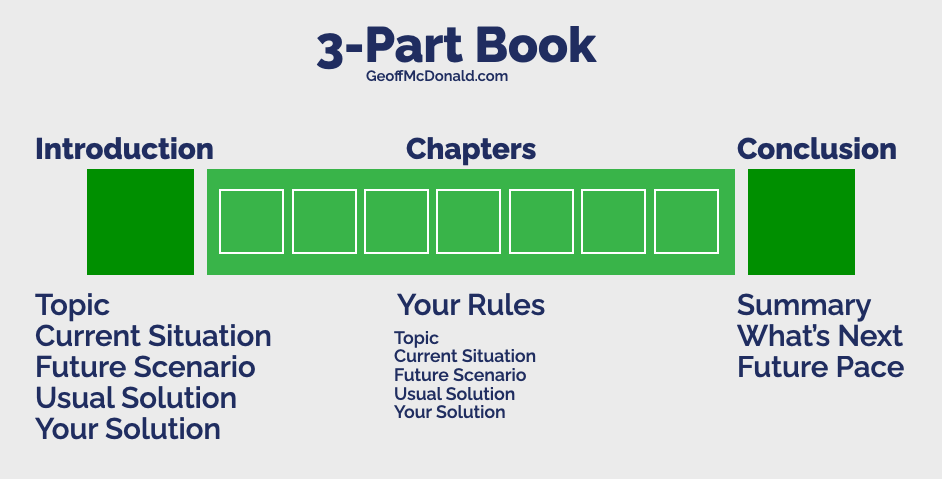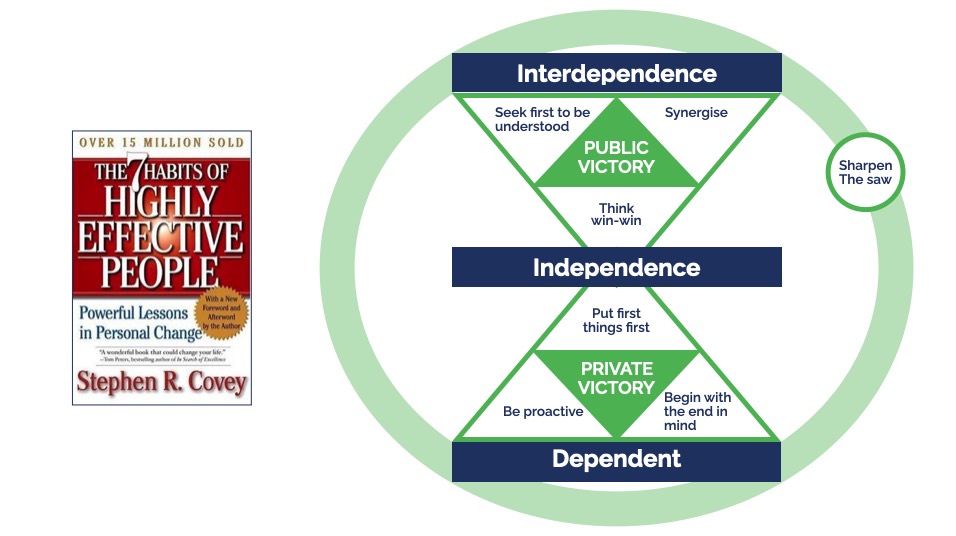A six-step book writing template to help you make your book great.
Writing a great book can provide a big boost to your reputation and your business. But it can also take a lot of time and effort to produce – especially if you’re writing your first book and you’re not sure how to go about it.
As a former architect, I know the importance of foundation and structure. It’s the key to having your building stand up and stay up.
It follows that the key to writing a great book is a clear outline and a strong structure so you know what you’re writing, and your audience can follow along easily. This is where you need a clear book writing template to follow.
In this post, I’ll share:
- The six-step book writing template that I use to organise my book content.
- An example of how to use this book writing template based on the book I’m currently writing.
- How to use this book writing template in the three traditional book sections.
- A bonus book writing tip number seven that will take your book to the next level.
Non-fiction Business Books
This book writing template applies specifically to non-fiction business books. (I haven’t written a novel yet, but I probably would use a different book writing template for that.)
Plus, it’s not the only way to map out the structure or outline of your book. In this post, I mapped out 18 different ways to write a book here. From my experience, having written 12 books, I’ve used a number of different writing templates for most of them. And I road test this template write my book Done, plus I’ve worked with clients with it too – so I know it works.
Take it for a test drive to see if it is right for you.
Content Pillars
In my previous post, Content Pillars – The Insider Strategy to Becoming a Thought Leader, I shared a six-step strategy for defining your content pillars. These are the key topics you will talk about with your clients and online followers.
This is the same framework as my book writing template. That’s a huge advantage because it means you can write your book using this template and translate your ideas easily into your content marketing.
I’ll share the six steps first, then I’ll showcase the example of the current book I am writing to show you how this book writing template looks in action.
The Six Steps of the Book Writing Template
Here are the six steps:
- Content Topic: Start with your topic. What’s your area of expertise?
- Current Situation: The problem or the now. Where is your client right now? What problem are they facing?
- Future Scenario: When the problem is resolved, what does this look like?
- The usual solution. How do most people tackle this problem?
- Your solution. What’s your unique way of tackling this problem? It needs a specific name.
- Your rules, principles, or steps for solving the problem and taking people to their ideal future.
My Book Example
Now let’s look at each part of this template using my current book as an example.
1 Content Topic
There are three key pieces in your topic: Titles, Category and Keywords.
Titles
My working book title is ‘Ideas Marketing’. The sub-title is ‘How to attract a cult-like following’.
My big tip is to have a working title for your book and then start writing. I’ve seen a lot of people waste a lot of time trying to figure out the perfect title. My approach is to let the title emerge as I write and define what the actual book becomes. It can be a fatal mistake to not write your book until you get the perfect title. Just start writing, it will emerge as you write.
Category
Your category is an important frame of reference for your readers. They need to have a frame or a box to put your book into. The keys here are to ‘keep it simple’ and ‘make it obvious’. We don’t want obscure categories. You might like to think of the general categories your book might sit under if placed on a shelf in a bookstore.
My book is a non-fiction business book in the category of marketing and branding.
Keywords
Going beyond your general category, you will want to highlight the keywords that you and other people use around this topic. This can include SEO keywords plus the common words or concepts people use. The aim here is to speak the current language of your potential audience. Sure, you’ll want to put your own spin on things, but leave that to the solution phase.
My book includes keywords and phrases such as:
- Brand ideals
- The Four Ps of Marketing
- Product Ecosystem
As a goal to aim for, I suggest you have 10-20 keywords. And a great way to find them is to read articles on your topics and capture the keywords and phrases that are commonly used.
2 Current Situation
What’s the current situation your potential readers are facing?
At this stage we’re being a good leader who is pacing and leading their audience – you want to meet them where they are at and lead them to the promised land. But, we need to ensure we don’t jump too far ahead and lead them behind. If you don’t build the bridge between your readers’ current situation, then they won’t hear your message.
There are three things to consider:
- Current problems – what are they struggling with?
- Words – what are people saying? Be specific and ideally capture their exact words
- Emotions – how are people feeling? Are they frustrated, stressed, or confused?
For my book, marketers are struggling to cut through using their traditional approaches. This is partly because of the shift from advertising to social media. There are so many social channels and everything is moving so quickly they can no longer ensure their promotional strategies cut through.
They say things like, ‘the usual way doesn’t work anymore’.
A useful framework here is the Kubler-Ross Grief Cycle because it shows phases of emotions that your audience may be going through.
For my audience, most are in the Denial and possibly Anger phases. The old things are not working. They’re either confused by this or they’re starting to become frustrated. The good news is they are ready for a fresh solution.
3 Future Scenario
The future scenario describes the world of the customer when their problem has been resolved.
In Joseph Campbell’s Hero’s Journey, he talks about the shift from the Ordinary World to the Special World. This is like this transition from their current situation to your future scenario.
At a simple level, the future scenario will be the opposite of their current situation. If they are feeling confused now, they might have clarity.
At a deeper level, this will be a whole new experience – a transformation.
For my book, if marketers are currently feeling frustration and confusion, when they adopt my new wonder framework, those feelings will disappear. More importantly, they’ll become excited about the new possibilities in front of them.
Ideally, I’d like them to say that their view of marketing has been completely changed and they feel reborn as marketers.
Again, this is not far from the Hero’s journey view of transformation.
Specifically, I want my book to connect the dots between things they are currently seeing as separate. When they do that, they will be excited about the fresh world in front of them.
Martin Luther King presents a great example of describing the future scenario in his famous I Have a Dream speech. He provides a detailed and specific description of the world he wants to create and live in.
4 The Usual Solution
The usual solution. How do most people tackle this problem?
The key to this step in your book writing template is to talk to people and do some research.
You simply need to ask them, ‘how would you solve this problem?’
For my book, when I ask the question, ‘how do you plan your marketing and branding?’ most people answer it as separate issues. They either say, ‘I do my marketing like this and ignore branding.’ Or vice versa.
One of the classic marketing frameworks is the 4Ps of Product, Price, Promotion and Place.
What I’ve started noticing is that people are adding Ps to this formula – for instance, there is now the 7Ps of Marketing.
This is an important clue that some of the traditional models and frameworks for defining our marketing are no longer working and people are looking for alternatives. This is the opportunity I want my book to address.
5 Your Solution
So far we’ve spent a good deal of time and effort to check in with where your audience is at – what are their problems, how they feeling and what’s their usual response. Hopefully, they are now open to hearing your solution.
There are three levels to your solution. You want to have a:
- Specific name
- One-sentence description
- Single-page description
For the specific name, think of your solution as if it is a product that you can point to.
Car companies do this well, they have the overarching brand and then a product name. I love the name Rolls Royce Silver Shadow.
For me, my solution is called Ideas Marketing.
You also want to be able to describe your solution in a short statement.
Ideas Marketing is an 8-part process for creating a brand/marketing ecosystem for your customers to live through. (That’s a bit heavy now – hopefully, by the time I’ve finished my book that will be a little sexier. A work in progress!)
Your solution can have several forms:
- Sell the benefits in a marketing form – this will go on the back of your book and on your sales material
- A practical description that outlines the key elements of your approach
- Key stories that tell the story of transformation
6 Your Rules
Your rules, principles, or steps are the way you solve the problem and take people to their ideal future.
The question to answer here is: What would you tell someone to do if they said they had this problem?
This is likely to be the biggest part of your book. And typically, you’re going to want to write a full chapter of each of your key principles or steps.
For me, I have an 8-part process and it follows that I need to write a chapter on each of the eight parts. Yes, that’s eight chapters. That’s one on each of the following ideas:
- Manifesto – create your big idea
- Game – define how you win
- Publish – spread the word
- Experience – make emotional moments
- Artifact – enable with tools
- Cult – unite the like-minded
- Ritual – live it every day
- Gestalt – make it sustainable
How to use this writing template in your book
Now that we have our components or modules for our book we need to know how they will fit together in the finished book.
I tend to think of a typical business book as having three main sections: the introduction, the main chapters, and the conclusion.
The Introduction
Your introduction is where your book does a lot of heavy lifting to engage your reader and hopefully inspire them to read your whole book.
It follows that in your introduction you need to lay out your entire message of what’s to come.
In this way, the first five steps of your book writing template are all going to be used in your introduction.
The Main Chapters
The main chapters of your book are essentially one chapter for each of your rules, principles, or key points.
It’s also worth noting that within each chapter you can use the same structure or framework.
- Start with a topic or chapter title
- Define the problem people currently face
- Suggest an alternative future scenario
- Offer the usual solution
- Then provide your unique way of tackling this problem.
You can think of this as a fractal pattern – the overall structure is repeated in each chapter.
The Conclusion
The typical conclusion to an essay or a book has three parts:
- Restate the problem and your solution
- Wrap up and summarize what you’ve covered, and
- Most importantly, you offer a final thought. This could be more of your future scenario from step 3, it might be a what’s the next step or a future pace that has people experience what life could be like if they took the action you’ve suggested.
One way to do this is to consider a personal future scenario and a community one. For instance, if you did this your life may become like this. And if we all did this, then this might be possible for our community or the planet.
Bonus Tip
If you really want to take your book to the next level – plus have a clear and simple map of what you’re writing and an easy way for your audience to engage and learn about your book ideas is to create a visual diagram of your book.
You might have noticed that I’ve been using a model in this post. And here’s a further example from Stephen Covey’s best-selling book The Seven Habits of Highly Effective People. If you’ve read the book you’ll probably recognise the visual diagram.
Summary: Six-Step Book Writing Template
Let’s wrap up what we’ve covered here…
- A clear book writing template makes it easier for you to write a book and easier for your audience to read it.
- The big bonus of this approach is that you can use it to write your content marketing pillars as well as your book because it uses the same framework.
- In your introduction, you need to meet people where they are at. This includes describing their current situation.
- Then you can present a future scenario of what their world will look like when they have solved their problem.
- Next, we want to look at the usual solution and why this fails to provide the result people want.
- This creates the opening for your audience to hear your solution.
- And the bulk of our book is going to be the steps, principles or rules that form our solution.
- Finally, in your conclusion, you want to summarize your message and present a what’s next or future pace.
If you follow this simple six-step book writing template, you’ll be better prepared to make your book great.
More on Book Writing Template
If you’d like more on how to write your book here are some other pieces of content I’ve created and shared recently:
- Content Pillars: The Insider Strategy to Becoming a Thought Leader
- 18 Different Ways to Write a Book
- IP Creation Projects for Thought Leaders

